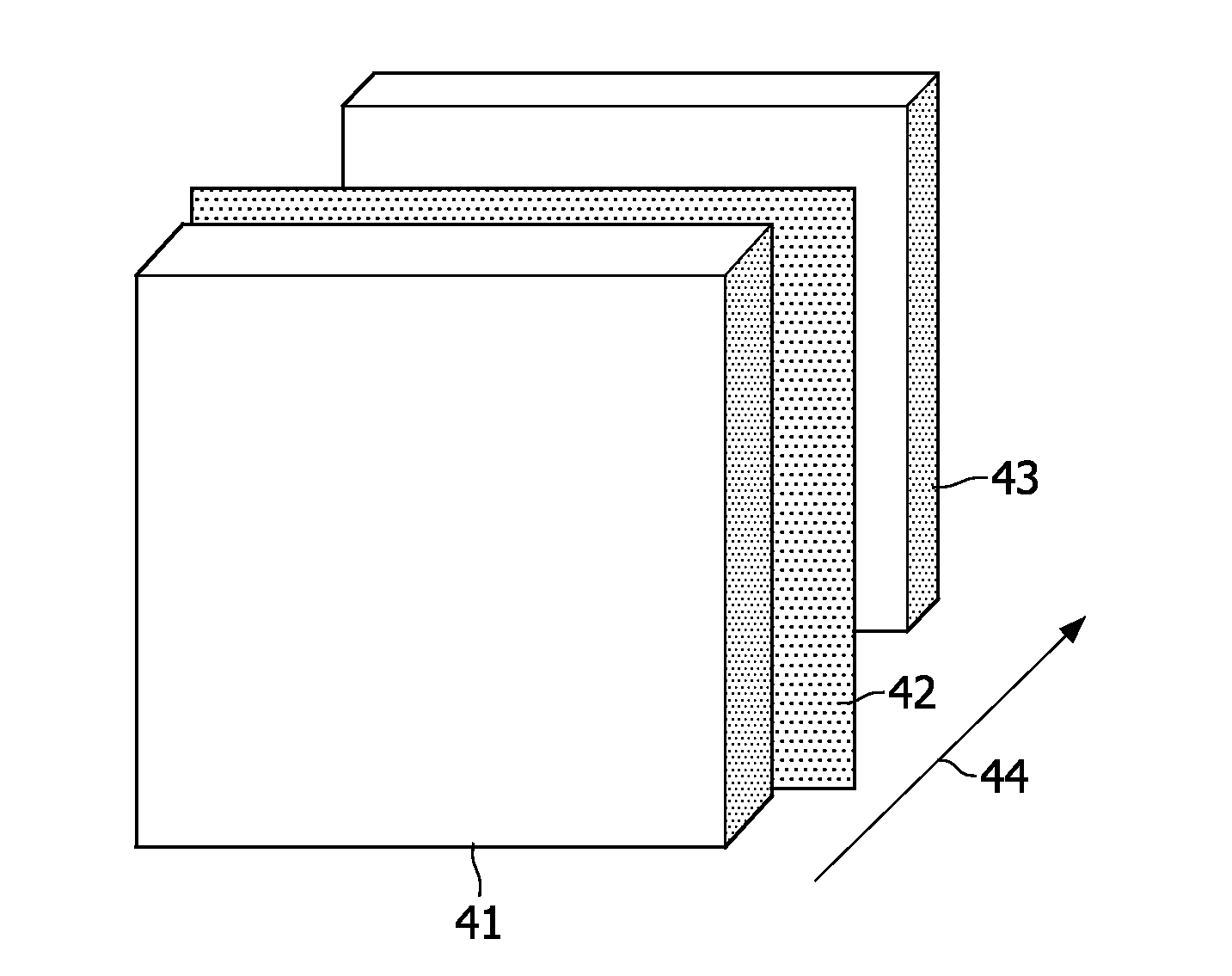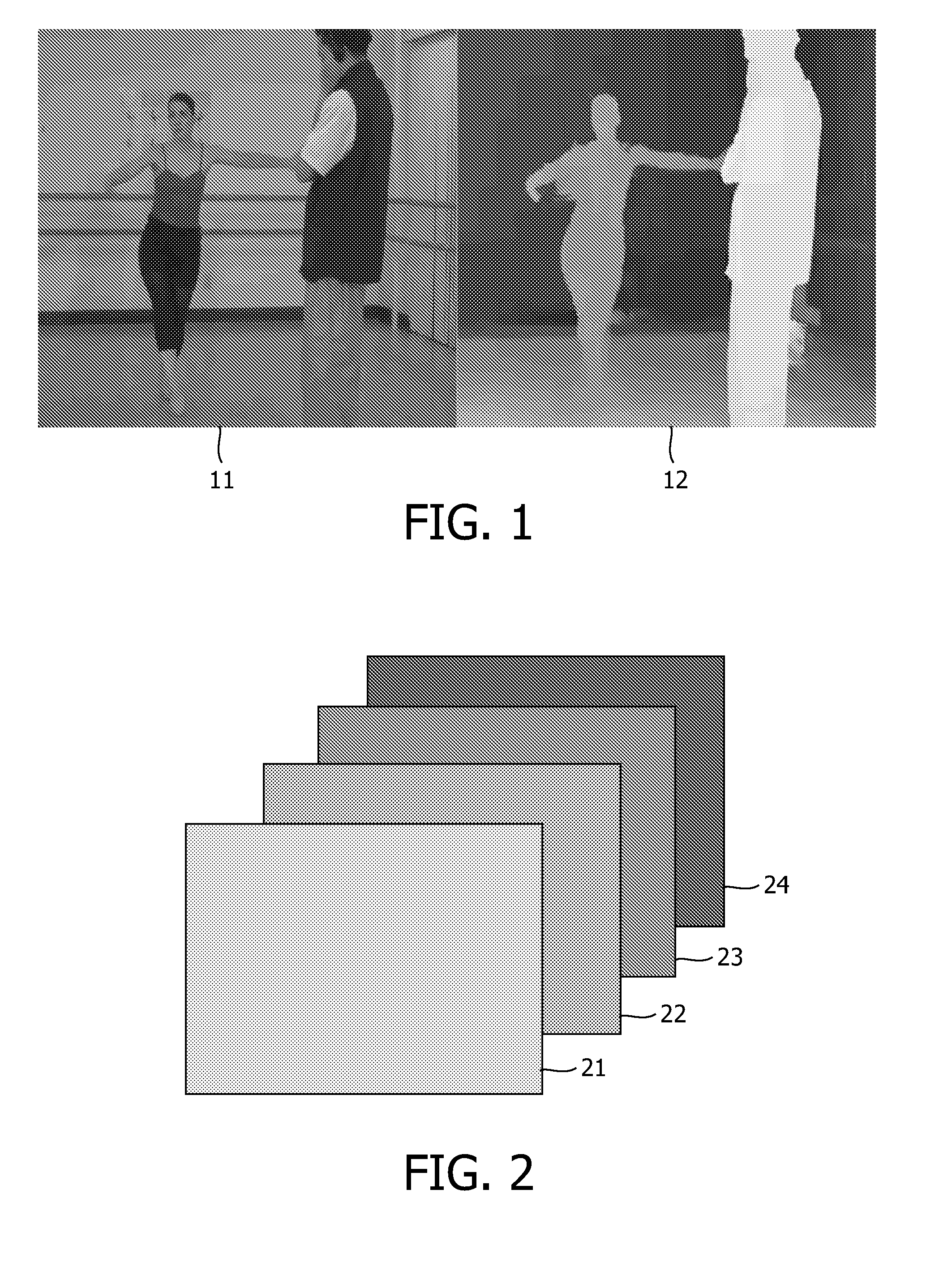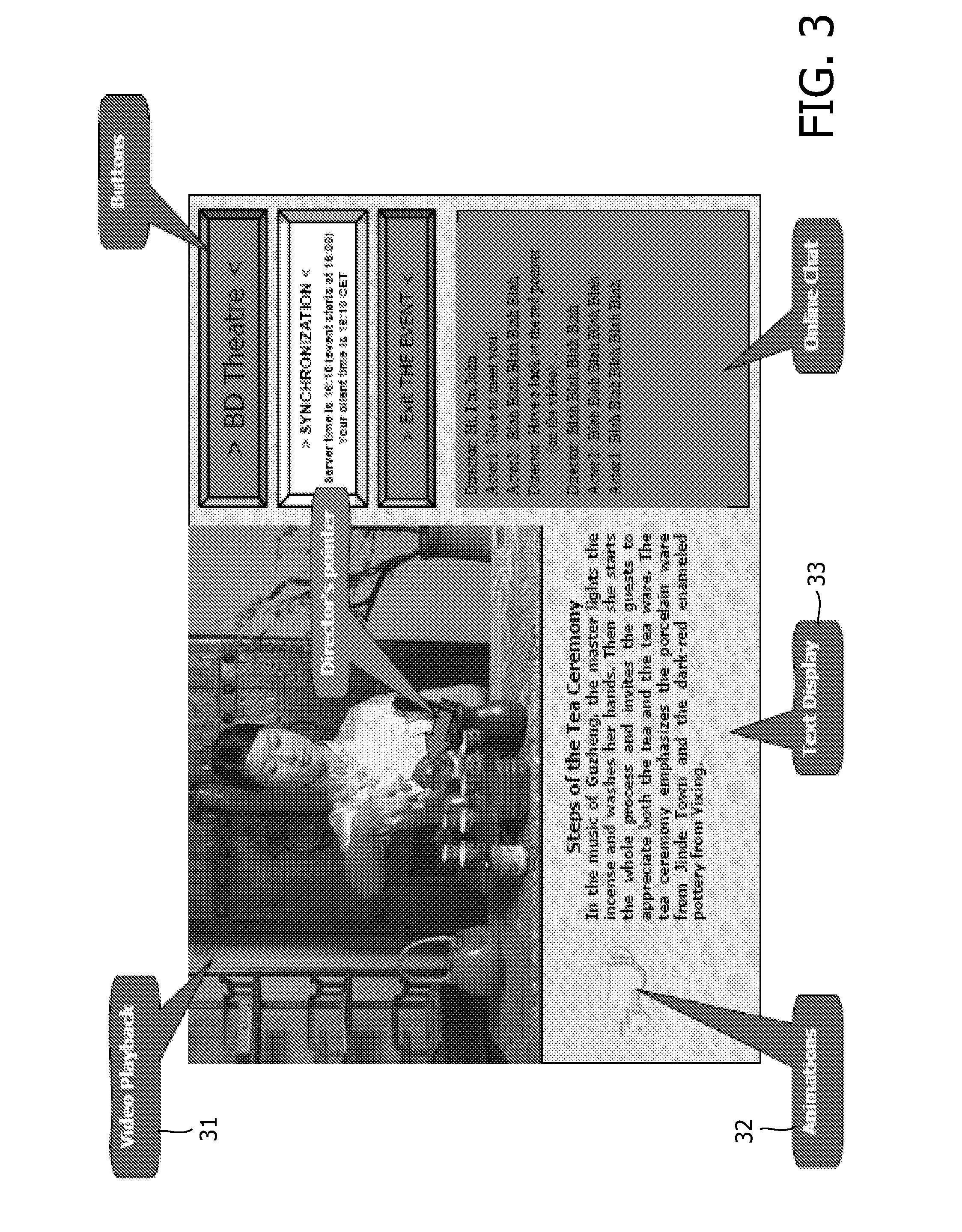3 menu display
a 3d-image and menu technology, applied in the field of rendering visual information, to achieve the effect of reducing range, avoiding confusing mix-up of elements, and facilitating mapping
- Summary
- Abstract
- Description
- Claims
- Application Information
AI Technical Summary
Benefits of technology
Problems solved by technology
Method used
Image
Examples
Embodiment Construction
[0023]The following section provides an overview of three-dimensional [3D] displays and perception of depth by humans. 3D displays differ from 2D displays in the sense that they can provide a more vivid perception of depth. This is achieved because they provide more depth cues then 2D displays which can only show monocular depth cues and cues based on motion.
[0024]Monocular (or static) depth cues can be obtained from a static image using a single eye. Painters often use monocular cues to create a sense of depth in their paintings. These cues include relative size, height relative to the horizon, occlusion, perspective, texture gradients, and lighting / shadows. Oculomotor cues are depth cues derived from tension in the muscles of a viewers eyes. The eyes have muscles for rotating the eyes as well as for stretching the eye lens. The stretching and relaxing of the eye lens is called accommodation and is done when focusing on a image. The amount of stretching or relaxing of the lens musc...
PUM
 Login to View More
Login to View More Abstract
Description
Claims
Application Information
 Login to View More
Login to View More - R&D
- Intellectual Property
- Life Sciences
- Materials
- Tech Scout
- Unparalleled Data Quality
- Higher Quality Content
- 60% Fewer Hallucinations
Browse by: Latest US Patents, China's latest patents, Technical Efficacy Thesaurus, Application Domain, Technology Topic, Popular Technical Reports.
© 2025 PatSnap. All rights reserved.Legal|Privacy policy|Modern Slavery Act Transparency Statement|Sitemap|About US| Contact US: help@patsnap.com



